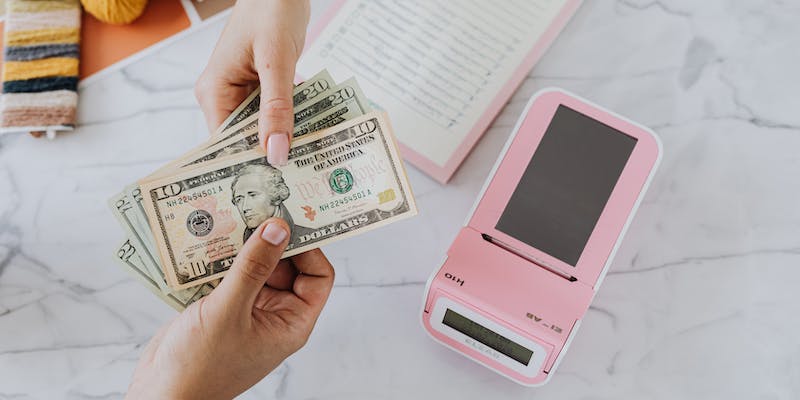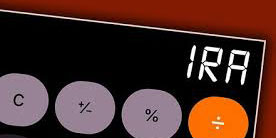How To Handle Unauthorized/Mistaken Transactions From Checking Account
Triston Martin
Dec 10, 2023
In light of the recent cybersecurity breaches, it’s high time that people be aware of the unauthorized transactions that might happen from their accounts. If you observe any transactions on your account that appear out of the ordinary and require further validation, contact your bank immediately.
Unauthorized Transactions
Unauthorized purchases are those without your consent. Identity theft can involve bank account hacks or credit card theft. These unauthorized transactions must be identified quickly to protect your funds.
Unauthorized transactions have increased due to more people banking and shopping online. Statistics show that 15% of bank customers had a fraudulent transaction in 2022. This figure shows rising transactional security concerns.
A transaction fee deducted without your knowledge is an unauthorized transaction. If your purchase or bank transfer incurs unexpected costs, this may happen. Review account statements regularly to catch hidden transaction fees.
Unauthorized transactions can hurt businesses and individuals. They deplete funds and undermine transaction systems. In 2023, 5% of online transactions were unauthorized, up from the year before. This trend necessitates careful money management.
Unauthorized Third Person Access
Unauthorized access to checking accounts can occur in various ways, posing a severe risk to account security. A typical scenario is the loss or theft of a debit card, potentially allowing the finder to misuse it. Additionally, criminals employ techniques like skimming devices and hidden cameras at ATMs and gas stations. These tools capture account numbers and PINs, leading to unauthorized transactions.
Another significant threat is social engineering, where fraudsters impersonate authority figures to trick individuals into revealing sensitive information. Jason Ioannides, a director at Alloy, a company specializing in automating bank customer verification, emphasizes the effectiveness of this method in compromising bank accounts. The goal of these criminals is often to execute transactional activities without the account holder's consent, resulting in unauthorized transactions and potential transaction fee.
Standard Methods For Unauthorized Transactions

Card skimming
Card magnetic strip skimming occurs when a device copies data. This usually happens when withdrawing cash from an ATM or paying in a store. Someone can use your card details for unauthorized transactions because the device reads and stores them.
Phishing
Phishing involves fake bank or government emails. These emails request a confidential account or card information. If you respond, fraudsters can use your information for unauthorized transactions. Be careful not to email sensitive information.
Account Takeover
Personal information like login credentials can be accidentally given to a bad actor. Using this information, they can make online purchases or other transactions as you. Protect your data and limit who sees it.
Lost Card Risks
If you lose your card, someone might find it and use it for unauthorized transactions. Until you report the card as lost and get it blocked, the person who finds it could spend your money.
Card-Not-Present Fraud
In this type of fraud, someone uses your card details, like the card number and expiry date, to transact over the phone or through mail orders. It's tricky to manage since they don't need the physical card. You must check your account statements regularly to spot any unusual activity.
How Can You Protect Your Checking Accounts?
One can take these precautions to protect yourself:
Beware of Phishing Scams
Beware of phishing scams. Scam emails, calls, and texts from banks or other service providers may appear. These messages often request personal or account information.
When contacting you, legitimate financial institutions won't ask for your name, password, PIN, or other account information. Chase Bank representatives gave this advice. Staying aware of phishing attempts helps protect your account from unauthorized transactions.
Exercising Caution at ATMs
Use ATMs carefully, especially with your physical debit card. Criminals often install skimming devices on ATMs and payment terminals, especially in remote areas.
These devices can steal your card information and make unauthorized purchases. Always use ATMs in well-lit, public places and check for unusual devices or features. Being mindful at ATMs reduces transactional fraud and financial losses.
Using Technology for Shopping Safety
Technology can improve shopping safety in today's fast-paced financial environment. Chase stresses the benefits of using your bank's mobile app, which offers mobile alerts and debit card control from your phone.
This feature helps manage transactional security. The app lets you lock your card when not in use to prevent unauthorized transactions. Notifications for certain transactions keep you informed and vigilant.
Additional Security Layers
Online banking requires extra security. Strong passwords no longer work alone. Experts like Ioannides recommend multifactor authentication and biometrics, which many smart devices have.
These methods enhance transaction security. Also, use a credit card instead of a debit card when shopping online. Credit cards offer better protection against unauthorized transactions, making transactions safer.
Check Your Accounts
Regular bank account monitoring helps identify unauthorized transactions quickly. These situations require quick detection and resolution, so check your bank statements or online transactions often.
Your transactional security depends on this vigilance. Taking proactive steps to protect your finances goes beyond spotting unauthorized transactions. Combining these strategies can significantly reduce transactional fraud and make shopping safer.
Steps to Take After Discovering an Unauthorized Transaction

If you see an unauthorized transaction, act fast. Call your bank's fraud department first. Your debit card cancellation, replacement, and online banking password changes will be assisted by staff. For added security, they may freeze your account, requiring additional verification for future transactions.
Report Documentation
Follow up with a letter or email after your call. Include your account information, the time and date you noticed the unauthorized transaction, and when you reported it. Writing your report provides proof and can help resolve the issue.
Timeliness and Liability
Acting quickly is crucial. Under federal law, you are excused from fraud liability if you notify the issuing bank of a lost or stolen card before making any fraudulent purchases. If you register within two days, your obligation will be $50. You have 60 days to dispute a transaction; failing to do so may cost you.
Additional Steps and Bank Role
Your bank has ten days to investigate an unauthorized transaction dispute. Contacting the merchant may also help. Merchants may refund before the bank investigates.
Bank Contact Safety Measures
When calling your bank, use the number on the back of your ATM card. Beware of fraudster-created support numbers. Hang up and call your card number if a caller requests personal information.







